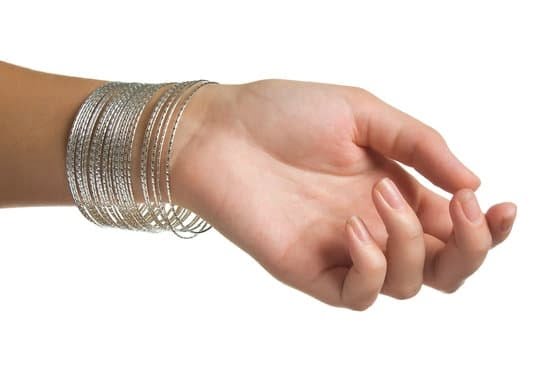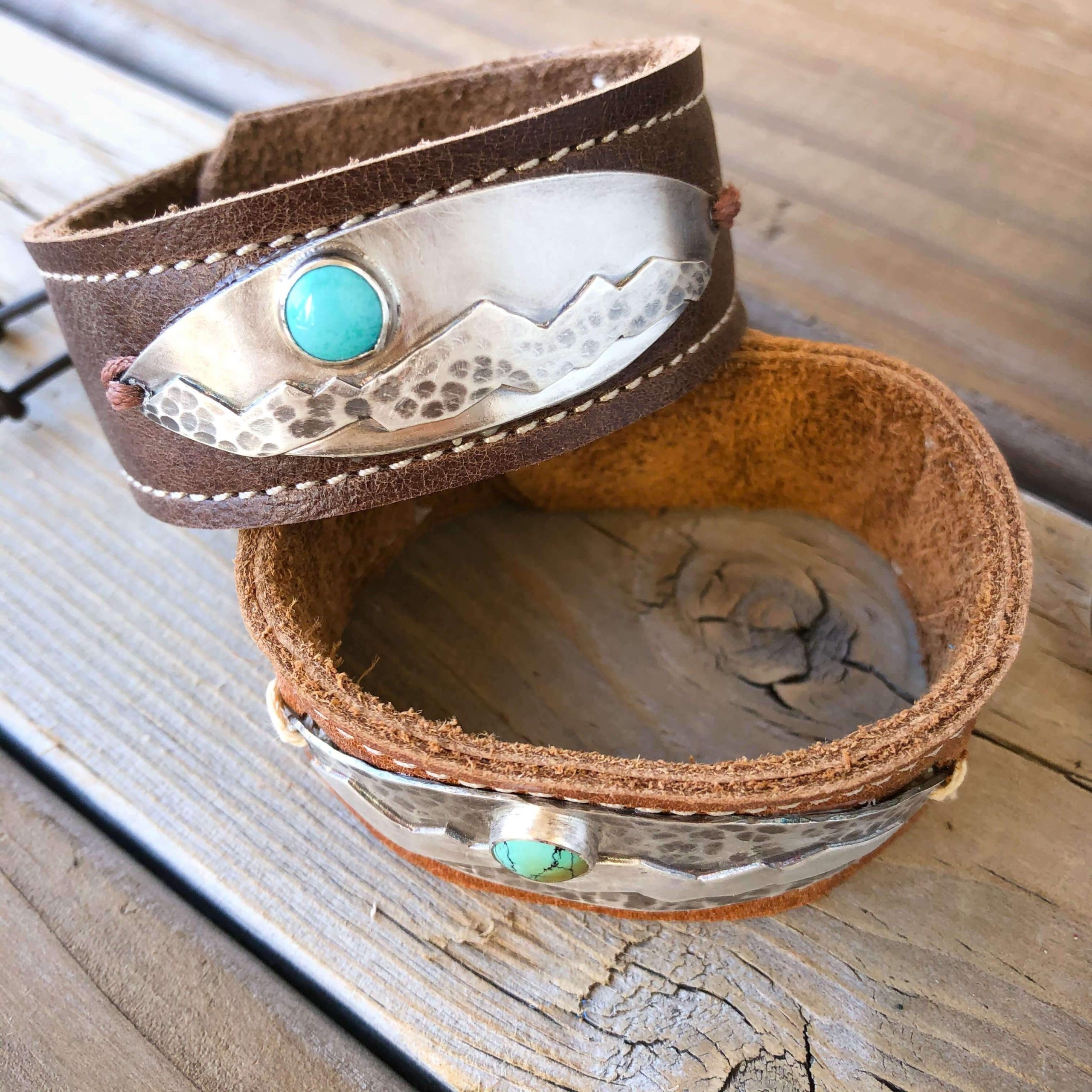When it comes to picking out the perfect accessory, determining what jewelry material you can wear in water when swimming or other activities is key. Depending on how long and often you plan on wearing your piece while submerged in water, there are several metals and other materials that can help you choose a piece that stands the test of time and will last.
There are a few materials that offer water-resistant properties such as stainless steel, gold-filled jewelry, titanium, sterling silver, PVC plastic, silicone rubber, tungsten, and surgical grade stainless steel. Stainless steel jewelry is highly popular for its durability and resistance to corrosive substances. In addition to being able to withstand daily use in water, it also doesn’t tarnish very easily which makes it an ideal choice for accessories you’ll be wearing often.
Gold-filled jewelry has gold surfaces with a much thicker Karat layer than dipped pieces made with gold plating so these rings have an impressive resilience against corrosion due to their durability and thickness which make them perfect for the beach. Titanium is another great choice for anyone who wants a waterproof piece of jewelry because this alloy is hypoallergenic, lightweight and highly impervious to corrosion under normal conditions especially when exposed to saltwater environments like pools or oceans.
For a casual or fun look during physical activities where no special types of metals or pieces should be worn, PVC plastic rings are lightweight and cost effective option that gives you style without weight or worry about losing your investment due to accidental exposure of any type of liquids.
Silicone rubber is another common material used in sports jewelry given its comfortfeel and extreme level of flexibility; plus they come in all sort of colors making them great choice among active people looking for stylish solutions.
Lastly tungsten carbide offers one six times greater scratch resistance compared to steel; making them reliable even in harsher conditions like coastal environments meaning big waves won’t destroy your beloved jewelry. Surgical grade stainless steel also presents an excellent level of resistance given its nonporous nature and thanks to this specific alloy blend’s process provides extreme levels of hygiene along with being very long lasting
Water-Resistant Metals
When it comes to jewelry that you can wear in water there is not a one size fits all solution, as the type of jewelry material depends largely on the type of activity and environment. Gold, silver, and titanium are among the most common materials when it comes to creating jewelry that can be worn in liquid environments such as swimming pools or beaches.
The reason why these three metals are ideal for wearing in water is because they have been specifically designed to be durable, corrosion resistant, tarnish-proof and lightweight. Additionally, many of the designs created using these metals are sleek and stylish with a polished finish.
Gold is an excellent choice for making high-end water-resistant jewelry due to its superior qualities. Not only does it resist corrosion from liquids but it also won’t shrink or swell when it’s exposed to high levels of humidity or moisture.
In addition, gold has a strong tensile strength which makes it perfect for wearing in the ocean or any other aquatic atmosphere. With this metal being one of the heavier options available for creating beautiful pieces of fashion statement jewelry then you know that your pieces will remain secure when performing vigorous activities around water or even just lounging at the poolside.
Silver has all some similar beneficial attributes as gold when it comes to producing fashionable accessories that can withstand contact with liquids such as saltwater found in oceans and seas. Generally, silver will not tarnish nearly as quickly as other metals which allows your pieces to remain new looking without needing too much maintenance after being in contact with liquid environments over time.
As well as modernistic designs then many seek out silver due both its ability to hold up against contact with water yet still exude sophistication at the same time making if very desirable among those seeking fashion gems suitable for swimming sessions in freshwater or seawater alike.
Lastly, titanium metal jewelry has become increasingly popular due to its lightweight yet durable characteristics when used for designing quality items suitable for wear during aquatic adventures such as surfing or swimming laps at the community pool. This silvery gray metal often gets compared to platinum even though its oxide layer causes titanium stainless steel grades everyday metals.
However titanium will shatter upon impact whereas platinum is softer and more embedded into high-end jewelry by master craftsmen due its low reactivity properties that make great adornments in all types of liquid climates including saltwater oceans surrounded by tropical island paradises.
Gold-Plating
Gold-plating is an increasingly popular form of metalwork that many people are using to beautify their possessions and protect them from damage caused by wear and tear. Gold-plating jewelry offers several advantages when it comes to being worn in water since the protective layer of gold provides improved durability and resistance to rust, tarnish, and corrosion.
It is highly unlikely that gold-plated jewelry will need any regular maintenance and it can last for years with minimal care. Additionally, gold-plated jewelry often looks just as impressive as solid gold without the extreme cost or weight of a solid gold piece.
Nevertheless, there are still certain limitations when wearing real gold-plated pieces in water. This is because there is a maximum number of layers that the gold can coat on top of another material before degrading its structural integrity.
While some forms of plating may allow for greater thicknesses through additional layering processes, this does increase the cost and reduce the flexibility associated with the piece’s design. Additionally, during extended periods spent in water such as saltwater or chlorinated pools, eventually these thin layers of gold will start to wear off due to aquatic erosion unless the piece has been adequately sealed beforehand.
Finally, even with all its benefits in terms of great aesthetics and protection against corrosion and tarnishing, wearing real gold pieces solely made out of plated metal may still not be suitable for everyday use if exposed to too much moisture depending on where you live and what activities you tend to engage while wearing jewelry.
Saltwater swimming should generally be done while wearing costume or imitation jewelry instead since these tend to have longer lasting finishes that are more resilient than their plated counterparts when exposed directly to salty sea life.
However non-gold plated materials that are especially designed for submersions such as stainless steel or titanium may be your best option if you want a high quality look for swimming or bathing activities without fear of damage from prolonged exposure to liquid environments.
Stainless Steel
Stainless steel jewelry is a popular choice for many people looking for both style and durability. Not only does stainless steel jewelry look great, but it won’t rust or corrode when it is worn in water.
Whether you are swimming, snorkeling, or just spending time at the beach, this type of jewelry can stand up to all your aquatic activities. Unlike other types of metal alloys, stainless steel’s resistance to tarnish and pitting makes it suitable for all sorts of aquatic scenarios.
The fact that stainless steel can be submerged in water without affecting its integrity is one of the reasons why it is so popular as a material for jewelry. Stainless steel pieces take on a neutral and natural look when they are worn in water.
You don’t have to worry about any chipping or discoloration occurring while they are submerged – and if you’re wearing them day to day, there are certain styles designed with marine environments in mind that can add even more charm to your look. This could include rings shaped like anchors, intricate designs with seahorses, starfish or shells embedded into the piece and more.
Also high on the list of benefits for wearing stainless steel jewelry in water is the low cost associated with this type of material. Compared to precious metals such as gold and silver which tend to be very expensive due to their scarcity combined with labor required to craft them into jewellery pieces, Stainless Steel items will come at a much lower price point and still maintain their durability and aesthetic appeal once immersed underwater.
So if you want something trendy yet durable enough not to easily break down when exposed to chlorine or saltwater then stainless steel jewelry is definitely worth considering.
Brass and Copper
Brass and copper are both classic metals that create unique charm to any jewelry piece. However, if you plan on wearing your brass or copper jewelry in the water, it’s important to note that these materials aren’t 100% water-resistant. They can quickly corrode when exposed to the water, containing chlorine.
This is especially true if you sweat often while swimming or get into the pool on a regular basis. Your brass and copper jewelries will start to darken and tarnish due to oxidation eventually.
It’s also important to take note of their maintenance tips – Regular polishing with a special cleaning cloth or soft brush will prevent tarnishing by removing body oils or spreading dirt and grime that accumulates over time. Additionally, always be sure to store your brass and copper jewelries separately so they don’t scratch each other (could cause corrosion).
If you want something more durable and long lasting for swimmer activities, stainless steel would be a great option for yon. Stainless steel is much better suited for getting wet as comparisons as it doesn’t result in reacting with oxygen easily which makes it rust resistant.
Plus, stainless steel jewelries generally comes with premium finish which require minimum washing as well – making them much easier in terms of upkeep. So if you love swimming frequently or just an outdoor enthusiast, stainless steel jewelry pieces are your best bet.
Natural Materials
When it comes to finding jewelry material that can be worn in water, natural materials are often a popular choice. Wood and horn are two of the most commonly used materials for jewelry making, as they provide great durability while still adding some flair and character to any outfit. Unfortunately, there is one major downside to choosing these materials for your jewelry: They should never be immersed in water.
Wood is easily damaged when exposed to water for too long. The fibers tend to expand and contract due to the moisture, eventually warping or cracking as a result. Not only will this ruin the piece’s look, but it can also cause a health risk if debris from the wood is ingested or inhaled into your lungs during wear.
Similarly, horn has its own unique vulnerabilities when submerged in water. The outer layers of untanned horn are porous, meaning that prolonged exposure may lead the material to absorb whatever liquid it’s been exposed too. This issue not only causes an unpleasant smell on the item itself, but it also increases its chances of breaking under even minor stress or pressure due to weakened fibers.
If you want your jewelry made with natural materials such as wood and horn to last through years of wear and still look just as beautiful when you bought it, then absolutely avoid immersing them in any kind of liquid – including water. Soap based cleansers should be used sparingly on these pieces if cleaning is necessary at all; excessive scrubbing or soaking can often do more harm than good here.
Generally speaking though, these items are best kept away from liquids altogether. Taking proper care will ensure they remain protected against any damage while maintaining their eye-catching appearance over time.
Synthetic Materials
Synthetic materials like acrylic plastic and others such as ceramics or porcelain are great for jewelry worn in water, including swimming pools and hot tubs. They come in a range of styles from classic to modern, making them the perfect choice for any occasion. While they may not have the same level of shine as gold or silver jewelry, their water-resistant quality makes them desirable.
One of the benefits of wearing synthetic jewelry in water is that it will retain its color and luster without tarnishing or corroding even when exposed to harsh pool chemicals such as chlorine. Acrylic plastic jewelry is made by creating objects out of non-flammable thermoplastic that can handle more heat than regular plastic items. It is lightweight, so wearing it won’t weigh you down while swimming or lounging around a pool or beach.
Ceramic and porcelain jewelry differs from traditional pottery because it contains silica which makes the pieces harder and more resistant to cracking and damage. You can find ceramic and porcelain beads with unique finishes such as glaze, engravings, or semi-gloss that give different appearances when combined into finished pieces.
Another great benefit of wearing synthetic materials is that they are often very affordable – even luxurious designs can be purchased for considerably less than traditional metals. This means you don’t have to worry about losing expensive fine jewelry near a body of water or hazardous liquids on land either.
Whether your style calls for bright colorful designs or sleek minimalism, there is a perfect piece just waiting for you to pair with your favorite ensemble. So the next time you need an accessory that can withstand the splashtest – consider investing in some beautiful synthetic jewelry instead.
Care Tips
The type of jewelry material you can wear in water depends on how it is designed, crafted, and treated. Jewelry made from natural materials such as wood, bone, or shell can become damaged when exposed to even a small amount of water. Likewise, metals such as sterling silver won’t last long in a swimming pool or the ocean. But there are some jewelry materials that are not only water-resistant but also waterproof.
One of the most durable and water-resistant materials is stainless steel jewelry. Stainless steel jewelry isn’t just strong and resilient to scratches and scuffs; it also holds up well against everyday exposure to moisture such as while showering or washing dishes. With little to no care required, this makes stainless steel highly desirable for beach trips and outdoor activities where dirt and water abound.
A great option if you’re looking for something fancier is titanium jewelry which is naturally corrosion-resistant as well as hypoallergenic-two major benefits that make titanium another good choice for water activities. Plus, titanium will keep its luster with minimal maintenance needed beyond general cleaning with a soft cotton damp cloth-it shall retain its color longer than most other metals without tarnishing or discoloring over time.
Caring for your water-resistant jewelry is easy: if your piece gets dirty from saltwater or sweat during a day at the beach or poolside then simply wipe it down with clean fresh water after use. Store these items away from direct sunlight apart from any other pieces of metal jewelry when not in use to maintain their original look intact over time and always remove them before exercising or showering as certain types of detergent can damage delicate finishes.
Conclusion
The choice for water-loving people when it comes to jewelry options is not limited. By choosing the right metal or material, it’s possible to have the perfect piece of jewelry that can be enjoyed in the water. Gold and platinum are two ideal precious metal choices and they both provide a luxurious look while also being strong enough to withstand contact with salt water and chlorinated waters.
Silver and copper, which are a bit softer than gold and platinum, can become tarnished over time but if looked after properly, can also make a wonderful addition to any collection. There are also plenty of synthetic materials on the market now so those looking for a more affordable option can find something that matches their budget requirements.
Another option that many people are now choosing is stainless steel jewelry as it’s highly durable and corrosion resistant making it perfect for anyone that loves spending time in the ocean or swimming pool. Stainless steel pieces such as rings and necklaces are easily available at many different price points so you don’t have to spend excessive amounts of money to get yourself some trendy bling.
As an added bonus, stainless steel doesn’t require much maintenance other than regular wiping down because it doesn’t corrode or fade in color like some other metals do.
Finally, titanium has started to gain popularity as an ideal material for swimwear accessories too as it has similar properties to stainless steel but with even greater durability – making this another great choice for those wanting reliable jewelry options when enjoying watersports or taking part in beach activities.
While a bit pricier than some of its counterparts, titanium offers great long-term value due to its superior strength and impressive resistance against wear-and-tear damage caused by saltwater or chlorine contact.
At the end of the day, finding the right material for your jewelry depends on preference, activity level and budget considerations – but ultimately there will be something out there suitable regardless of what circumstance you find yourself in.

Welcome to my jewelry blog! My name is Sarah and I am the owner of this blog.
I love making jewelry and sharing my creations with others.
So whether you’re someone who loves wearing jewelry yourself or simply enjoys learning about it, be sure to check out my blog for insightful posts on everything related to this exciting topic!





